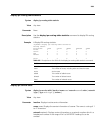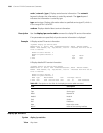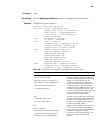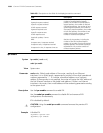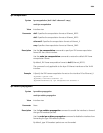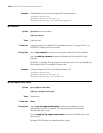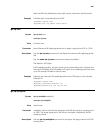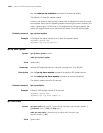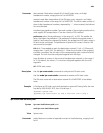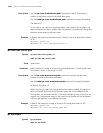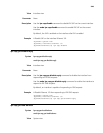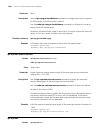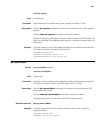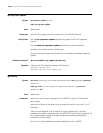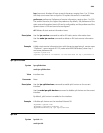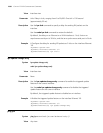
2543
Parameter dest-network: Destination network ID of the IPX static route, an 8-digit
hexadecimal number, ranging from 0x1 to 0xFFFFFFFE.
network.node: Next hop address of the IPX static route. network is an 8-digit
hexadecimal number in the range 0x1 to 0xFFFFFFFD. The 48-bit node consists of
three 4-digit hexadecimal numbers, separated by “-”; when entered, the leftmost
0s can be omitted.
interface-type interface-number: Type and number of the outgoing interface that
must support PPP encapsulation. It can be a Serial or POS interface.
preference value: Route preference, in the range of 1 to 255. The smaller the
value, the higher the preference. The preference of directly connected routes is
fixed to 0 and cannot be changed. By default, the preference of IPX static routes is
60 and can be configured. The preference of dynamic IPX routes is fixed to 100
and cannot be changed.
tick ticks: Time needed to reach the destination network (1 tick = 1/18 second).,
ranging from 1 to 65,534. The default is 1. When the tick value of the outgoing
interface is modified, the tick value of the corresponding static route will also be
changed. The ticks must be configured together with the hops.
hops: Number of routers on the route to the destination network, in the range 1
to 15. By default, the value is 1. It must be configured together with the ticks
argument.
all: All IPX static routes.
Description Use the
ipx route-static command to configure an IPX static route.
Use the
undo ipx route-static command to remove an IPX static route.
The IPX static route with a destination network ID of 0xFFFFFFFE is the default
route.
Example # Configure an IPX static route with destination network ID being 0x5a, the next
hop being 1000.0-0c91-f61f, ticks 10 and hops 2.
<Sysname> system-view
[Sysname] ipx route-static 5a 1000.0-0c91-f61f tick 10 hop 2
ipx route load-balance-path
Syntax ipx route load-balance-path paths
undo ipx route load-balance-path
View System view
Parameter paths: Maximum number of equivalent routes for load balancing, ranging from 1
to 64.



